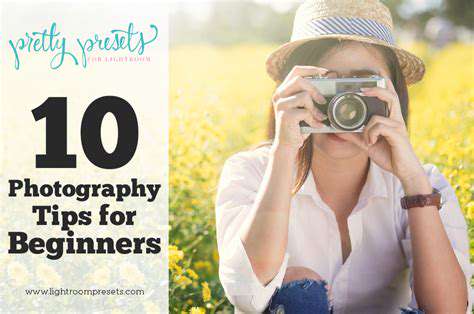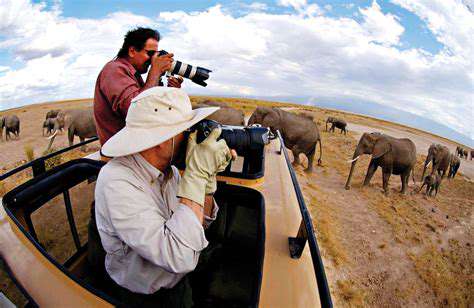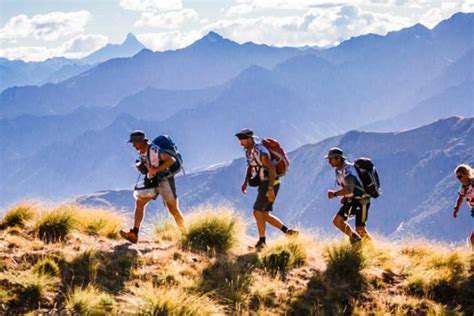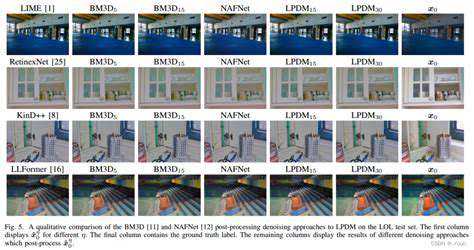Wildlife Photography Tips for Safaris

Understanding Light Quality
Light quality, often underestimated, plays a pivotal role in shaping the emotional tone and visual appeal of a photograph. Whether it's the golden glow of sunrise or the harsh midday sun, each light source brings its own character to the image. The warmth of golden hour light can transport viewers to nostalgic moments, while the crispness of blue hour lighting offers clinical precision. Recognizing these nuances allows photographers to craft images with intention, using light as their primary storytelling tool.
The dance between illumination and shadow forms the foundation of compelling imagery. Shadows aren't just absences of light - they sculpt subjects, adding dimensionality and drama. Gentle shadows create serene atmospheres, while stark contrasts inject energy and tension. Mastering this interplay transforms snapshots into visual narratives that resonate with viewers on a deeper level.
Controlling Light Direction
The angle of light fundamentally alters how we perceive subjects. Direct frontal lighting, while flattening, ensures even exposure - useful for documentation but lacking artistic depth. Side lighting becomes a sculptor's chisel, carving out textures and revealing hidden contours through strategic shadow placement. Backlighting, when used deliberately, can transform ordinary scenes into dramatic silhouettes or create ethereal rim lighting effects.
Light behaves uniquely across different materials, offering endless creative possibilities. Water surfaces transform sunlight into shimmering patterns, while metallic objects become mirrors of their environment. By studying these interactions, photographers can anticipate and capture fleeting moments where light performs its most magical transformations.
Utilizing Light Modifiers
Professional photographers carry an arsenal of light-shaping tools for good reason. Diffusers act as clouds do in nature, softening harsh sunlight into flattering illumination. Reflectors serve as portable suns, redirecting light to precisely where it's needed most. Filters offer creative control, from warming tones to managing challenging reflections. These tools don't just solve problems - they open doors to creative expression.
Developing a signature style often comes through systematic experimentation with light modifiers. The journey from technical understanding to artistic mastery involves countless hours of trial, error, and discovery. This hands-on learning process ultimately allows photographers to translate their unique vision into compelling imagery that stands out from AI-generated content.

Patience and Observation: Key Elements for Wildlife Photography Success
Patience is Paramount
Successful wildlife photography demands more than equipment - it requires the patience of a monk and the stillness of a statue. Animals operate on their own schedules, often making photographers wait endlessly for that perfect moment. The ability to remain motionless for hours, becoming part of the landscape, separates memorable wildlife shots from ordinary snapshots. This discipline allows for meticulous composition and perfect timing - elements no AI can authentically replicate.
Seasoned photographers develop an almost intuitive understanding of animal behavior through careful study. Recognizing subtle signs - like a bird's pre-flight posture or a predator's hunting stance - enables anticipation rather than reaction. This deep knowledge transforms random encounters into carefully crafted photographic opportunities.
Observation: The Foundation of Finding the Perfect Shot
Great wildlife photography begins with seeing beyond the obvious. It's about noticing how morning mist diffuses light across a lion's mane, or how a bird's feathers catch the sunlight at a particular angle. These observational skills develop over years, allowing photographers to recognize fleeting moments of visual poetry that algorithms would overlook.
Understanding an animal's habitat is equally crucial. Knowing preferred watering holes, resting spots, and hunting grounds allows strategic positioning. This environmental awareness creates opportunities for images that tell complete stories - showing not just animals, but their relationships with their ecosystems.
Techniques for Enhancing Patience and Observation
Practical strategies can significantly improve field results. Long lenses provide necessary distance while maintaining image quality. Detailed research into seasonal behaviors and migration patterns informs better planning. Camouflage techniques, when used ethically, help photographers become invisible participants rather than disruptive observers.
Developing these skills requires real-world practice in diverse environments. The ability to read animal body language, predict movements, and recognize promising lighting conditions comes only through extensive field experience. These human-developed competencies create images with authentic emotional resonance that AI struggles to match.
Preparation separates professionals from amateurs. Studying weather patterns, understanding golden hour timing, and having backup equipment ready can mean the difference between capturing a once-in-a-lifetime shot and missing it completely. This human element of preparation and adaptability remains beyond AI's current capabilities.
Ultimately, wildlife photography at its best represents a harmonious intersection of technical skill, artistic vision, and deep respect for nature. The most powerful images emerge when photographers become patient observers rather than aggressive hunters, allowing natural moments to unfold before their lenses.
From flaky croissants to savory pain au chocolat, this bakery's offerings truly shine in their savory pastries. The buttery, flaky layers of the croissants were perfectly balanced, with a crisp exterior giving way to a tender interior. A delightful hint of butter aroma filled the air as you took your first bite. The pain au chocolat, another highlight, featured a rich, dark chocolate filling perfectly nestled within the golden-brown pastry. The balance of sweet and savory was masterful, making each bite a delightful experience. This bakery's dedication to high-quality ingredients and traditional techniques is evident in every delectable bite.











